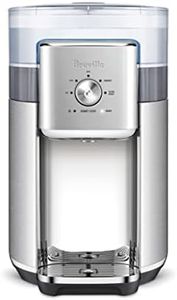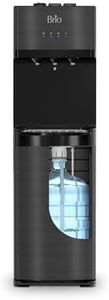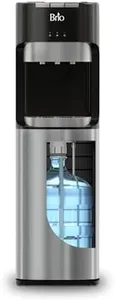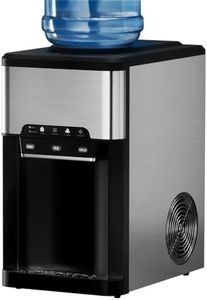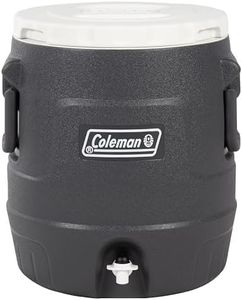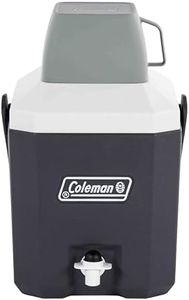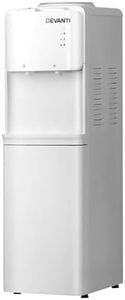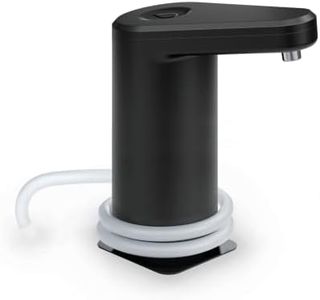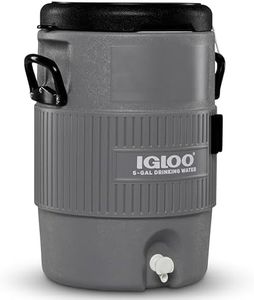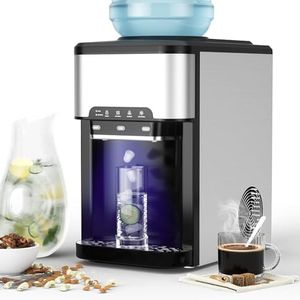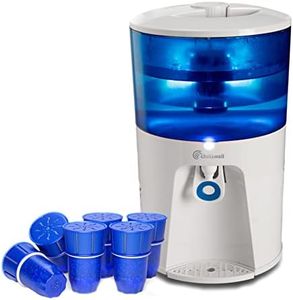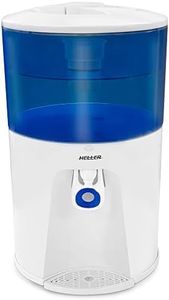We Use CookiesWe use cookies to enhance the security, performance,
functionality and for analytical and promotional activities. By continuing to browse this site you
are agreeing to our privacy policy
10 Best Water Cooler Dispensers
From leading brands and best sellers available on the web.By clicking on a link to a third party's website, log data is shared with that third party.
Buying Guide for the Best Water Cooler Dispensers
Choosing the right water cooler dispenser can make a big difference in your home or office, providing convenient access to clean, cool, or hot water. Before picking the best water cooler for your needs, think carefully about where you'll use it, how many people will rely on it, and what features matter most to you. It’s important to look at a few key specifications that affect convenience, maintenance, and the user experience. Understanding these specs will help you match a product to your specific needs, so you stay happy with your choice in the long run.Type (Bottom Load, Top Load, Bottleless/Direct Line)This specification refers to how the cooler is supplied with water. Top load coolers require you to lift and place a large water bottle upside down on top of the unit, while bottom load coolers let you slide the bottle into a compartment at the base, making refills easier and reducing spills. Bottleless or direct-line coolers connect directly to your water plumbing and don’t require bottle replacements. If you have difficulty lifting heavy items, a bottom load or bottleless option would be more user-friendly. If portability or no plumbing access is important, then top load is a simple choice.
Water Temperature OptionsMost dispensers provide cold and hot water, but some may also offer room temperature or even extra-cold/chilled settings. If you regularly need hot water for tea or instant foods, a hot water spout is essential. For those who just want refreshingly cold water, focus on models with efficient cooling. Households with children may want cool and room temperature only, avoiding the burn risk from hot water. Consider what temperatures you’ll actually use daily to pick the right dispenser.
CapacityCapacity typically refers to either the size of water bottles the dispenser can accommodate or the amount of water that the internal tanks can hold at ready-to-serve temperature. Some units are designed to handle only small bottles, while others can fit larger 5-gallon sizes. For offices or large families, having a dispenser that can handle bigger bottles or higher internal storage means fewer refills throughout the day. Smaller sizes work well for single users or low-traffic environments.
Filtration SystemEspecially common with bottleless dispensers, filtration systems purify your tap water before it’s dispensed. Filtration removes impurities and can improve the taste and safety of the water. Some systems use basic carbon filters, while others offer multi-stage filtration for extra-clean water. Decide if you’ll use pre-bottled water (already filtered and purified), or if you need a model with built-in filtration because you’re using tap water. Your local water quality can help you determine how advanced of a filter you need.
Dispensing MechanismDispensers release water via push-button, lever, touch-panel, or even sensor mechanisms. Push-button and lever types are the most common; levers can be easier for those with limited hand dexterity, while sensors offer hands-free operation, which is more hygienic. Consider who will use the cooler frequently (children, elderly, guests) and pick a mechanism that’s easy and safe for them to operate.
Child Safety FeaturesSome water coolers come with safety locks for hot water taps to prevent accidental burns, which is crucial if you have young children at home. If hot water is available on the model you like, verify it includes a mechanism (like a two-step unlock process or a button cover) to keep little hands safe.
Ease of Cleaning and MaintenanceIt’s important for health reasons to keep your water cooler clean. Some models have removable drip trays and easy-access components that simplify the cleaning process. Bottleless dispensers may require regular filter changes. If you’d prefer less frequent deep cleaning, look for self-cleaning features or units designed for easy disassembly.
Size and PlacementSize means both the physical dimensions of the dispenser and its visual impact in your space. Some dispensers are compact and countertop-friendly, while others are freestanding floor units. Measure the area where you plan to keep the cooler, making sure there’s enough room for bottle changes or plumbing connections. Pick a size and style that fits your available space and matches your environment.
